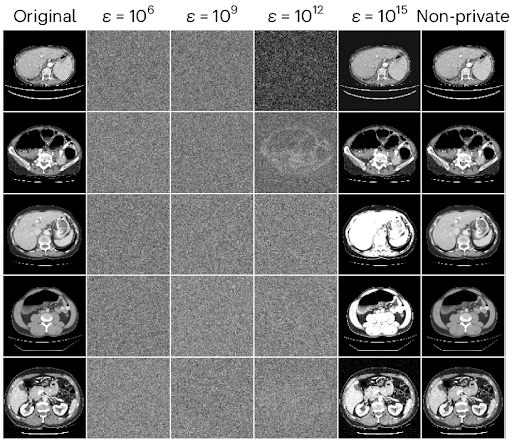The field of oncology plays a vital role in improving patient care while also carrying significant responsibilities. Reporting adverse events is essential for maintaining patient safety and refining treatment protocols. This article outlines practical guidelines for medical practice administrators, owners, and IT managers to follow U.S. regulations on reporting adverse events and suggests how artificial intelligence (AI) can improve workflow and accuracy.
Understanding Adverse Events in Oncology
Adverse events are any negative experiences linked to medical products. In oncology, these events can range from minor side effects of chemotherapy to serious complications, including hospitalizations or death. The National Cancer Institute states that many oncology patients encounter adverse events. Reporting these incidents is crucial for managing risks and ensuring patient safety. The FDA requires healthcare providers to report such incidents to enhance clinical practices and monitor pharmaceuticals.
From 2016 to 2021, about 40% of oncology practices had difficulty accurately identifying and documenting adverse events. This situation is concerning, as effective reporting can lead to improved patient outcomes and more reliable treatment options.
Regulations and Compliance
In the U.S., the Food and Drug Administration (FDA) outlines a framework for reporting adverse events. Healthcare practices must comply with FDA’s 21 CFR Part 803, which pertains to the reporting of medical device-related effects. Oncologists need to understand the rules for both drug and device reporting since treatments often involve both.
It is important for oncology practices to set up systems to monitor the safety of products used in their care protocols. Compliance officers should ensure that staff involved in patient care receive appropriate training on reporting adverse events, stressing the need for vigilance in checking and documenting potential complications.
Key Reporting Requirements:
- Timely Reporting: Reports must be made within a specific timeframe, usually 5-30 days after knowledge of an adverse event, depending on its severity.
- Detailed Documentation: Reports should include patient demographics, specifics of the event, and actions taken, along with details of the treatment given.
- Record Keeping: A thorough record of adverse events should be kept for access during audits and reviews.
Enhancing Workflow with AI
Implementing AI in the reporting process can improve compliance, streamline workflows, and reduce human error. Automated systems can assist oncology practices in several ways:
Automated Data Collection and Reporting
AI-driven platforms can automatically collect data from various sources, including electronic health records (EHRs). This automation lessens the manual workload for healthcare administrators while ensuring that relevant details are recorded correctly.
For example, Simbo AI provides phone automation services that handle patient calls and track conversations for reporting adverse events. By using voice recognition and natural language processing, the system gathers important information during patient interactions, allowing administrators to compile necessary reports without overlooking key details.
Risk Assessment Algorithms
AI can assist in assessing risks in oncology by analyzing patient data to spot possible adverse event scenarios. Machine learning algorithms can identify patterns related to certain treatments and predict outcomes based on past data. This approach helps healthcare teams prepare for and reduce potential negative effects before they happen.
Training and Education
AI solutions can improve training for staff on reporting adverse events. Using simulations and training modules, AI can reinforce education on compliance. It provides real-time feedback and tailored educational materials for each role—practitioners, IT staff, or administrative personnel.
Integration with Telehealth Services
As telehealth becomes more common, AI-driven solutions can enhance management of patient reports from remote consultations. The AI system can automatically flag potential adverse events mentioned during telehealth appointments, sending the information to the appropriate departments in real time.
Building a Culture of Safety
Creating a culture that prioritizes patient safety is essential for any oncology practice. Compliance with reporting adverse events involves more than just legal requirements; it also means cultivating an environment where healthcare workers feel safe to report issues without fear of repercussions.
Regular Training and Workshops
Conducting regular training sessions is important. These workshops can emphasize the value of reporting and raise awareness among employees about their crucial role in patient safety. Including case studies where reporting led to meaningful changes can be particularly effective.
Open Communication Channels
Establishing open lines of communication among different departments within the oncology practice encourages staff to feel more connected and willing to report adverse events. This culture can be nurtured through regular staff meetings or feedback sessions.
Importance of Reporting in Oncology
Timely reporting of adverse events offers several advantages for oncology practices:
- Improved Patient Safety: Accurate reporting provides data to refine clinical practices, ultimately enhancing patient safety.
- Regulatory Compliance: Thorough and timely reporting ensures adherence to FDA regulations, helping to avoid penalties.
- Enhanced Reputation: Practices that show dedication to patient safety often gain a positive reputation, resulting in increased referrals and patient trust.
- Research Utility: Data collected from adverse events can support broader research initiatives, advancing knowledge and treatment in cancer care.
Case Studies: Successful Implementation of AI in Reporting
Various oncology practices across the United States have adopted AI for reporting adverse events, leading to positive results:
- Case Study: Large Oncology Practice in New York
This practice introduced an AI-driven reporting platform that collected patient feedback through various channels. They achieved a 50% reduction in the time required to compile adverse event reports after implementation. Improved data collection and analysis enhanced compliance, creating a safer monitoring system. - Case Study: Community Oncology Clinic in California
This clinic used workflow automation to simplify the reporting of adverse events. By employing AI, they gathered data from telehealth sessions, external consultations, and patient follow-ups. Consequently, the clinic saw a significant rise in reported events, which led to better protocols and a drop in medication errors.
Practical Steps for AI Integration
For oncology practices thinking about integrating AI into their adverse event reporting systems, the following steps are suggested:
- Assess Current Procedures: Review existing workflows to find issues and areas for improvement in reporting adverse events.
- Select Appropriate AI Solutions: Choose AI technologies that fit specific needs—whether for data collection, analysis, or training.
- Engage Stakeholders: Include key personnel in the decision-making process to ensure support and successful implementation.
- Pilot Testing: Start a pilot project to test effectiveness before fully rolling out the AI system across the practice.
- Conduct Regular Reviews: Continuously monitor and evaluate the AI system’s performance to ensure it meets compliance needs.
By following these steps, oncology practices can effectively adopt AI, streamline their reporting processes, and improve patient care. The main focus should remain on delivering quality care while balancing compliance and safety in oncology practices.
The Bottom Line
As cancer treatments and patient care grow more complex, the demand for efficient adverse event reporting systems is greater than ever. By grasping regulatory requirements, adopting AI technology, and promoting a safety-first culture, oncology practices in the U.S. can navigate the challenges of reporting adverse events more effectively. Through dedicated efforts and thoughtful technology integration, these practices can enhance compliance and overall patient outcomes while fulfilling their commitment to those in their care.
The post Reporting Adverse Events in Oncology Practices: AI Compliance Tips first appeared on Simbo AI – Blogs.











